“The history of energy is neither linear nor Darwinian. It is full of forgotten fantastic innovations…”
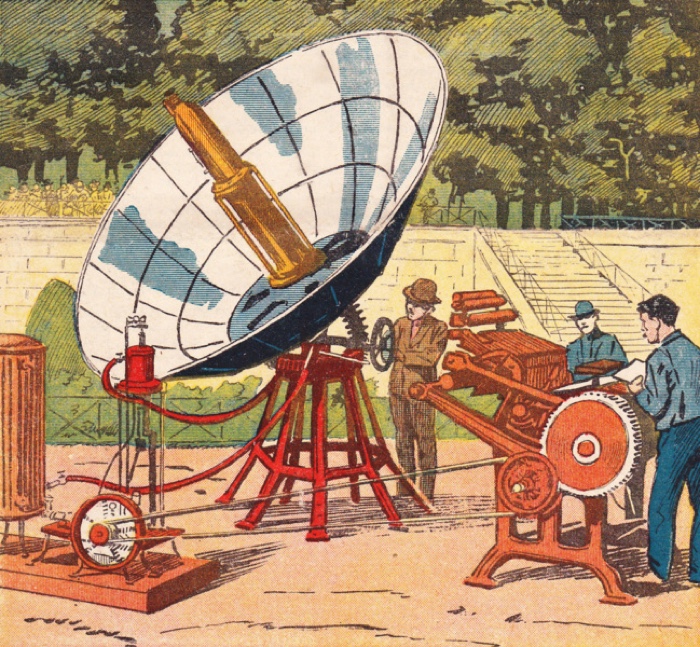
Augustin Mouchot and Abel Pifre, the first solar power printing press, 1882. Photo: Le petit inventeur
In 1866, Augustin Mouchot unveiled the world’s first parabolic solar collector and later used it to print newspapers in the Tuileries Gardens in Paris. At the end of the 19th century, pharmacologist Raphaël Dubois used photobacteria to generate light. Decades later, Nikola Tesla was working on a system that would transmit energy wirelessly, cheaply and over long distance. In 1947, Jean Laigret announced he had identified the bacterium that produces oil and could use it to turn organic waste into petroleum. His patent was never turned into a large scale venture and fell into oblivion.
Other energy efficient ideas are surprisingly mundane but remain overlooked: the pressure cooker, the Japanese kotatsu to keep your feet and legs warm during the winter and the Potato Patch Plan launched in 1894 by the mayor of Detroit Hazen Pingree to allow poor people to use vacant city land for growing food (saving thus on the energy and costs required to pack, ship, transform and sell produce.)
Others like the light bulbs that last for over a hundred year and Alkaline batteries that can be recharged up to 25 times don’t have the lucrative allure of planned obsolescence.
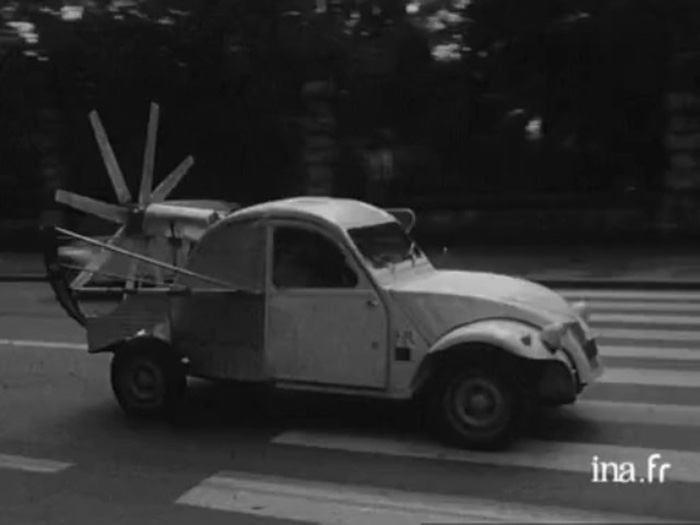
M. Leroy, The electric 2CV Citroën with propellers, 1974
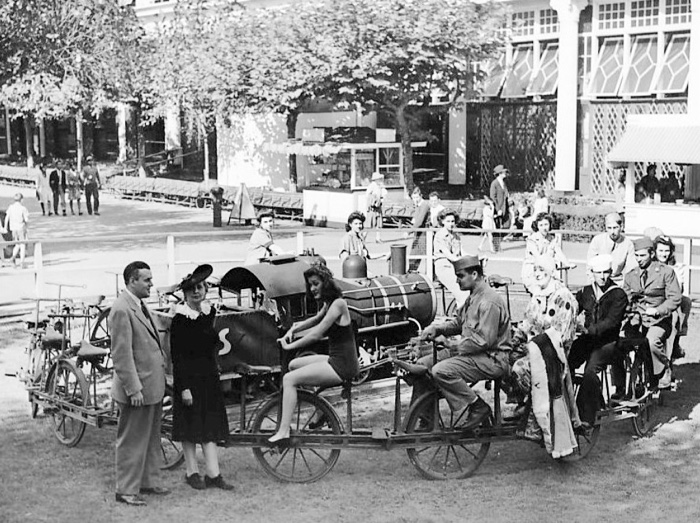
The Bicycle Ride at Steeplechase Park in 1942. It was the oldest ride in the park at the time and dated from 1897. Acme Newsphotos
Many of these inventions were smart and efficient. The economy, culture and politics of the time explain why they have not been adopted widely. But today, it is urgent that we give them the consideration they deserve.
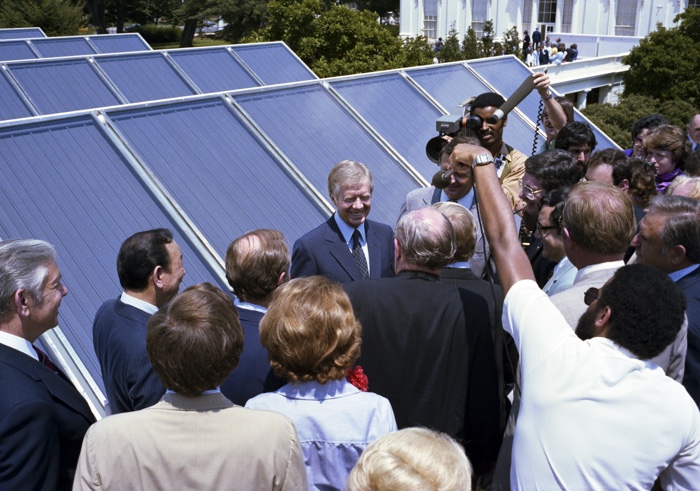
President Jimmy Carter dedicating the solar-thermal panels on the roof of the White House, 20 June 1979
The lack of support by governments is probably the most grating cause for their vanishing from public consciences. The case of The White House solar panels is a depressing example of a country that goes backwards at the expense of the environment and the health of its citizens. In 1979, Jimmy Carter had solar panels installed on the roof of the famous presidential residence to heat water. By 1986, the Reagan administration had slashed the budgets for renewable energy at the U.S. Department of Energy and gave priority again to fossil fuels, often from foreign suppliers. That same year, they also quietly dismantled the White House solar panel installation.
The members of Paléo Energétique comb through collections of dusty DIY magazines and archives to uncover forgotten patents, innovations and prototypes about the production of energy. The aim of their open source, collaborative research project is to share these forgotten ideas with engineers, designers and the broad public in order to shape collectively a more affordable and more eco-friendly energy future.
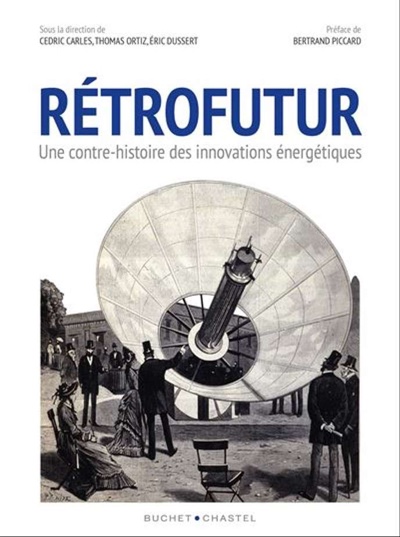 The website Paléo Energétique documents some of these surprising inventions from the past. If you want to learn even more about this research project (and you read french), i recommend you get your hands on the book Rétrofutur. Une contre-histoire des innovations énergétiques, by designer and researcher Cédric Carles, artist and engineer Thomas Ortiz, critic and writer Éric Dussert. With contributions by Ewen Chardronnet, Kevin Desmond, Ludovic Duhem, Alain Gras, etc. Published by Edition Buchet et Chastel.
The website Paléo Energétique documents some of these surprising inventions from the past. If you want to learn even more about this research project (and you read french), i recommend you get your hands on the book Rétrofutur. Une contre-histoire des innovations énergétiques, by designer and researcher Cédric Carles, artist and engineer Thomas Ortiz, critic and writer Éric Dussert. With contributions by Ewen Chardronnet, Kevin Desmond, Ludovic Duhem, Alain Gras, etc. Published by Edition Buchet et Chastel.
Along with the presentation of each paleo-energy invention, the book contains essays that reflect on the meaning of technological progress, the ambivalent role of patents, the history of electric aviation, design fiction, artistic visions of energy, etc.
Here’s a couple of the most surprising green energy inventions from the past:
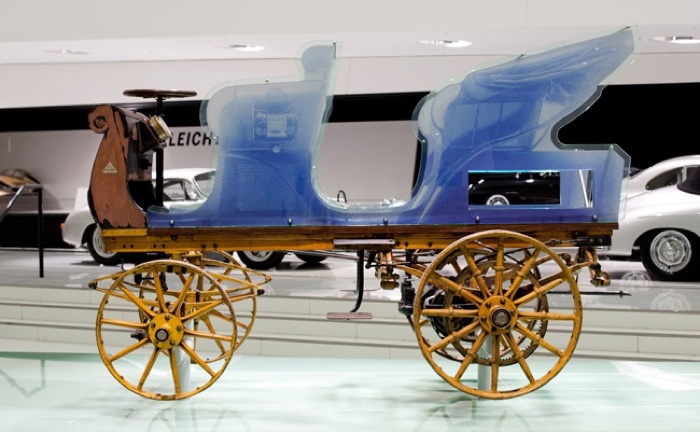
Ferdinand Porsche, Egger-Lohner electric car from 1898 (photo)
In 1898, Ferdinand Porsche presented the Egger-Lohner electric vehicle, C.2 Phaeton model (known as the ‘P1’ for short), the world’s first Porsche but also an electrically motored vehicle. It was fairly fast, had a range of around 80 km but its batteries were so heavy the vehicle could not be driven up steep roads.
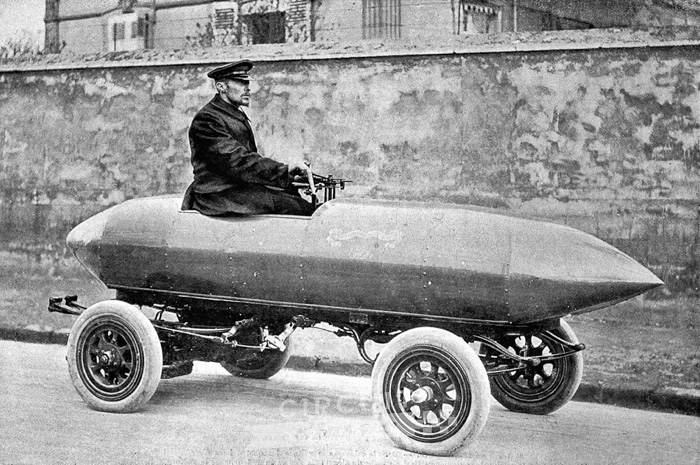
Camille Jenatzy, La Jamais Contente, 1899
La Jamais Contente (“The Never Satisfied”) was the first road vehicle to go over 100 kilometres per hour. It was an electric car and used ultra light materials to compensate for the weight of the engine and batteries.
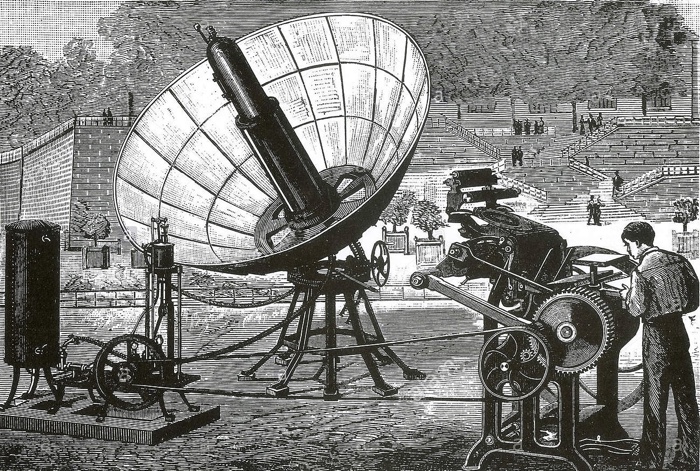
Augustin Mouchot and Abel Pifre, the first solar power printing press, 1882 (photo)
In 1866, after six years of work, Augustin Mouchot and his assistant Abel Pifre produced the world’s first parabolic solar collector. Mouchot’s device, developed 15 years before the dawn of commercial electricity generation, was used in demonstrations to power pumps, print newspapers in Paris and even ice-making machines.
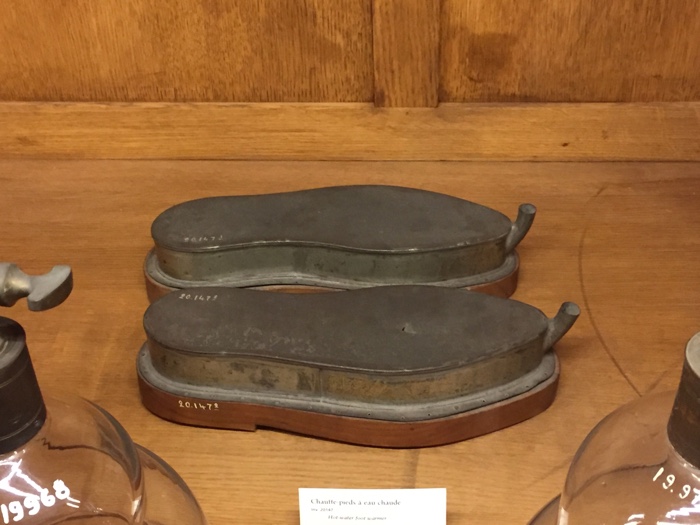
Antoine Lavoisier, Heating soles, around 1780. Photo
Antoine Lavoisier, a French 18th-century chemist known for Lavoisier’s Law about the conservation of mass (“Rien ne se perd, rien ne se crée, tout se transforme” in English, “Nothing is lost, nothing is created, everything is transformed.”), imagined this pair heating soles. You would fill them with hot water and they’d keep your feet nice and toasty for a few hours.
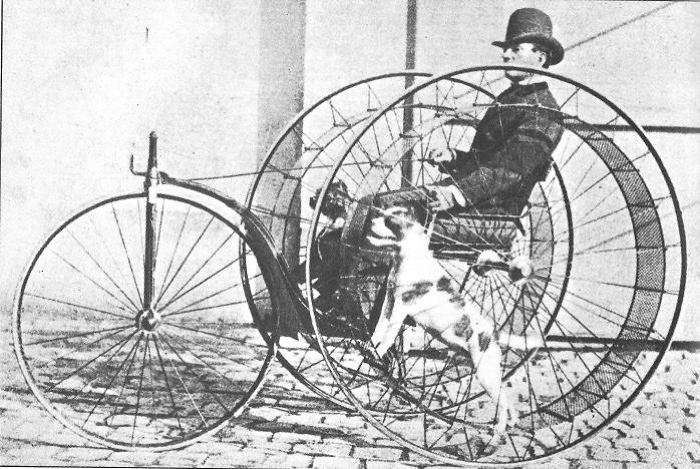
Cynophère, a dog-powered bicycle invented in 1875 by M. Huret (photo)
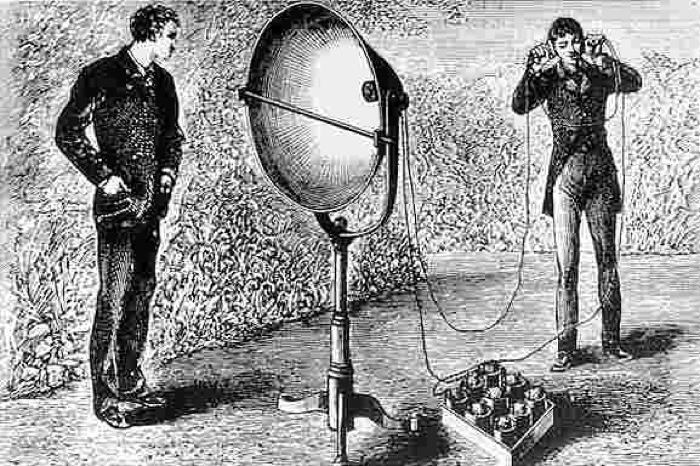
A photophone receiver and headset, one half of Bell and Tainter’s optical telecommunication system of 1880 (photo)
While Alexander Graham Bell’s invention, the telephone, uses electricity to transmit voice communications, the Photophone relied on a beam of light to send sound. A person’s voice was projected through an instrument toward a mirror. The vibrations of the voice caused vibrations in the mirror. Sunlight was then directed into the mirror, where the vibrations were captured and projected back to the photophone’s receiver where they were converted back into sound.
Bell believed that the photophone was “the greatest invention [I have] ever made, greater than the telephone”. The photophone was indeed a precursor to the fiber-optic communication systems but it didn’t take off during his time simply because the system was useless whenever the weather was cloudy.
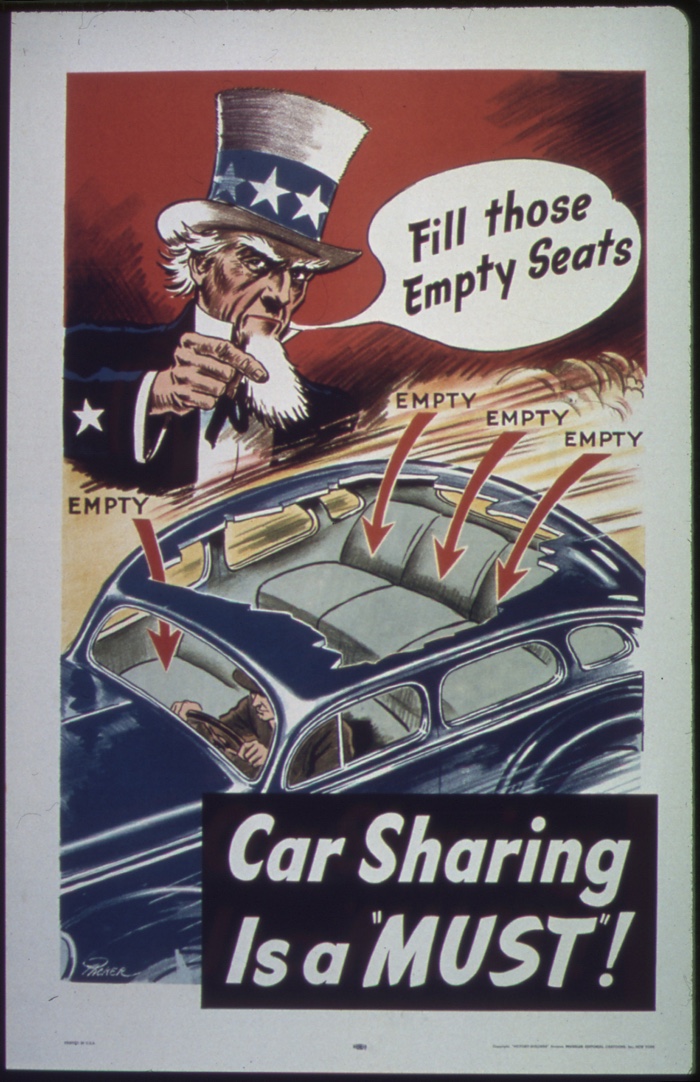
Fill Those Empty Seats. Car Sharing is a “Must”!, 1941-1945 (photo)
Propaganda poster distributed by the United States government during World War II to encourage carpooling among American citizens and conserve gasoline for the war. Another famous such posters read When You Ride Alone, You Ride with Hitler
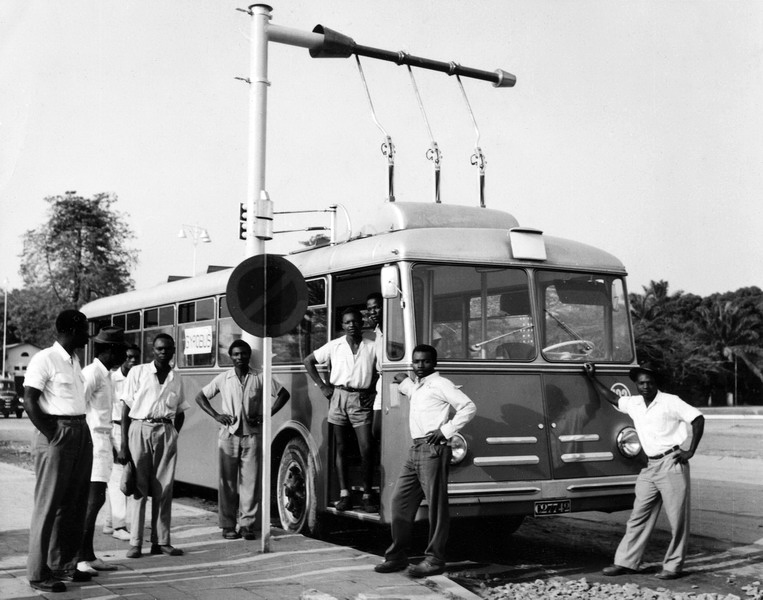
Gyrobus (electric city buses powered by heavy spinning wheels) in Leopoldville, Congo, mid-1950s. Photo
M. Leroy, The electric 2CV Citroën with propellers, 1974
Luud Schimmelpennink, the Witcar
The “Witkar”, or white car, was the world’s first electric car-sharing scheme. Created by social inventor and politician, Luud Schimmelpennink, these small environmentally-acceptable vehicles took to the roads in 1974 in a bid to tackle pollution on the streets of Amsterdam.
